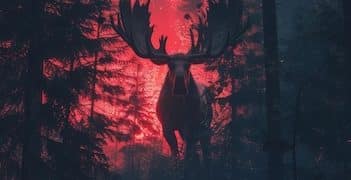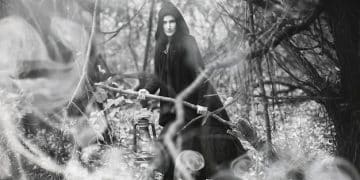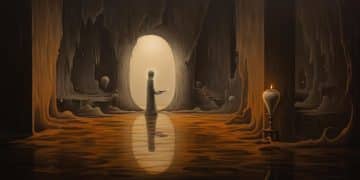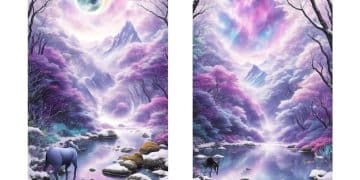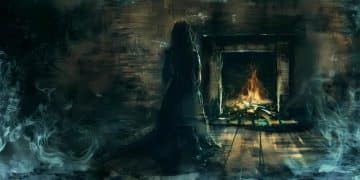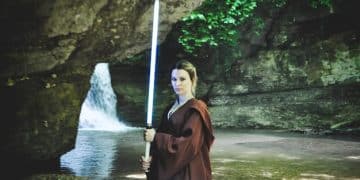Unveiling The Witcher’s Dark Bestiary: Monsters of the Continent
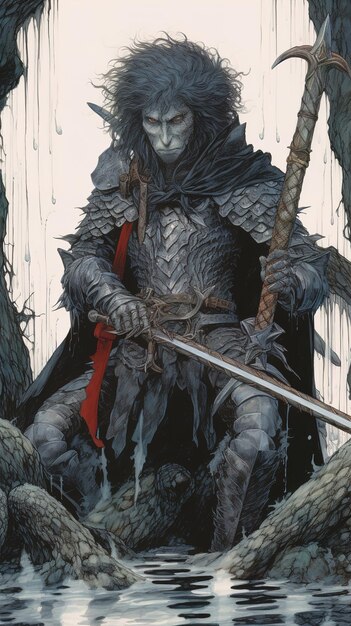
Netflix’s ‘The Witcher’ plunges viewers into a world teeming with terrifying monsters and mythical creatures, each deeply rooted in folklore and integral to the Continent’s dark and dangerous landscape.
Venture into the dark and fantastical world of Netflix’s ‘The Witcher’: A Deep Dive into the Monsters and Creatures of the Continent’. From the terrifying ghouls to the majestic dragons, uncover the secrets and lore behind the creatures that roam the Continent, shaping the destiny of Geralt of Rivia.
The Witcher’s Continent: A Monster-Infested Realm
The Continent of ‘The Witcher’ is not merely a backdrop; it is a living, breathing entity teeming with monstrous life. These creatures, born from the Conjunction of the Spheres, play a vital role in the world’s ecology and the tales of Geralt of Rivia.
Understanding these monsters is key to appreciating the depth and complexity of ‘The Witcher’ universe. They are more than just beasts to be slain; they are integral components of the Continent’s history and future.
The Conjunction of the Spheres: The Monster’s Genesis
The Conjunction of the Spheres, a cataclysmic event in ‘The Witcher’ lore, forever altered the Continent. It was during this event that monsters from other dimensions spilled into the world, changing the landscape and introducing deadly threats.
This event is essential for understanding why the Continent is so dangerous and why witchers, like Geralt, are necessary.
- The Conjunction: A pivotal moment that introduced monsters.
- Ecological Impact: Monsters became part of the food chain.
- Witcher’s Role: The need for monster hunters was born.
In essence, the Conjunction of the Spheres is the bedrock upon which the entire monster ecology of ‘The Witcher’ is built. It transformed a once familiar world into a land teeming with unpredictable and often deadly creatures, forever changing the destiny of its inhabitants.
Classic Monsters: Ghouls, Graveirs, and Rotfiends
Among the most common, yet still terrifying, creatures encountered in ‘The Witcher’ are ghouls, graveirs, and rotfiends. These undead monsters are a constant threat that prey on the living and plague battlefields.
These creatures aren’t just simple monsters. They have a dark history and specific habits that Geralt must understand to effectively combat them. Understanding their origins and weaknesses is key to Geralt’s survival and the safety of those he protects.
Ghouls: The Scavengers of Death
Ghouls are carrion eaters, often found scavenging on battlefields or near cemeteries. They are fast, agile, and possess sharp claws and teeth.
These monsters present a unique challenge due to their pack behavior and their ability to infect their victims with disease.

Graveirs: The Armored Undead
Graveirs are a more powerful variant of ghouls, often found guarding burial sites. They are heavily armored, making them tougher to kill.
Their resilience makes them a formidable foe, requiring a different combat strategy than their ghoul counterparts.
- Habitat: Prefer battlefields and cemeteries.
- Diet: Carrion eaters.
- Weakness: Vulnerable to fire.
In conclusion, ghouls, graveirs, and rotfiends represent the grim reality of the Continent, where death is never truly the end. Understanding their behaviors, weaknesses, and origins is essential for anyone navigating the perilous landscapes of ‘The Witcher’.
The Wild Hunt: Specters of Legend
The Wild Hunt, also known as the Wraiths of Mörhogg, are an ominous group in The Witcher lore. They haunt the Continent, portending doom and destruction wherever they appear.
As spectral warriors, they are some of the most unforgettable antagonists, and understanding their purpose unlocks key elements of the series. More than just villains, they are integral to the Continent’s fate and the prophecies that guide Geralt’s path.
The Hunt’s Origins and Purpose
The Wild Hunt rides across the sky, bringing frigid temperatures and stealing souls. Legends describe them as harbingers of war, plague, and general destruction.
These specters are not merely raiders but hold a specific interest in Ciri, as they seek to exploit her Elder Blood lineage.
Key Members and Abilities
Led by the formidable Eredin, the Wild Hunt commands a host of spectral warriors. Their ability to move between worlds and freeze their foes makes them a deadly force.
Each member brings unique skills and brutality to the hunt, making them individually and collectively terrifying.
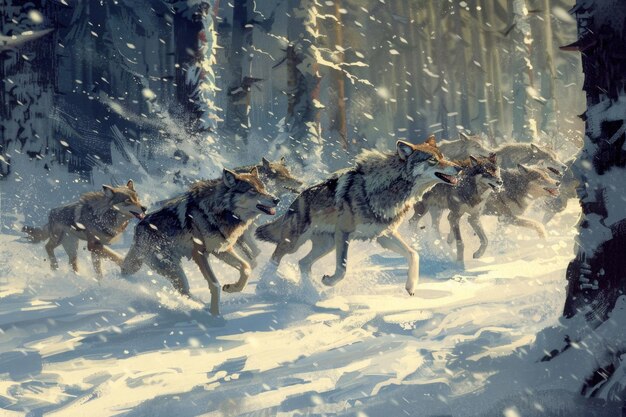
- Eredin: The ruthless leader of the Wild Hunt.
- Soul Stealing: Their primary method of enslavement.
- Interdimensional Travel: They can cross into different realms.
In conclusion, the Wild Hunt emerges as an essential element of ‘The Witcher,’ representing not only a physical threat but also a looming symbol of destiny and destruction. Their relentless pursuit and connection to the Elder Blood narrative make them unforgettable antagonists in Geralt’s saga.
Relict Monsters: Kikimores and Leshens
Relict monsters in ‘The Witcher’ represent ancient and powerful creatures that have survived for centuries, adapting to the changing landscapes of the Continent.
These monsters are deeply intertwined with the natural world and represent some of the most challenging and fascinating encounters in the series. Their existence sheds light on the Continent’s distant past and the balance between humanity and nature.
Kikimores: Swamp Dwellers
Kikimores are large, insectoid creatures that dwell in swamps and marshes. They are territorial and fiercely protect their nests. With their tough exoskeletons and acidic saliva, they present a formidable challenge.
These monsters are highly territorial and usually attack intruders in swarms, making them dangerous foes unless dealt with methodically.
Leshens: Guardians of the Forest
Leshens are ancient, intelligent creatures connected to the forest itself. They are protectors of the woods and are hostile to those who disrespect or harm nature. With their ability to control plants and animals, they are powerful adversaries.
These monsters symbolize the power of nature and the consequences of disrupting the natural order; they require respect and caution when encountered.
In conclusion, relict monsters like kikimores and leshens represent the ancient power and enduring mysteries of the Continent. They are integral to the world’s ecology and narrative, reminding us of the delicate balance between humanity and the natural world.
Draconids: Majestic and Deadly
Draconids in ‘The Witcher’ are a diverse group of dragon-like creatures, ranging from lesser wyverns to the rare and magnificent true dragons.
These creatures hold a special place in the lore, with dragons often being intelligent and possessing their own agendas. They are not merely beasts to be slain but intelligent beings with complex motivations, who add layers to the Witcher’s world and force moral decisions to be made.
The Hierarchy of Draconids
Wyverns are the most common type of draconid, often hunted for their hides and organs. Drakes are larger and more dangerous, while dragons are the apex predators of the draconid family.
The specific draconid encountered determines the level of threat, with each species presenting a distinct set of challenges.
Notable Dragons in The Witcher
Villentretenmerth, also known as Borch Three Jackdaws, is a golden dragon capable of taking human form. He is one of the few dragons respected and feared by humans.
His existence breaks the mold of dragons as simple beasts and reveals the possibility of co-existence and mutual respect.
Draconid Weaknesses and Strengths
Draconids are typically resistant to most forms of attack, but are vulnerable to silver swords and draconid oil. Their strengths lie in their flight capabilities and powerful breath attacks.
Knowing their weaknesses is crucial, but one must also respect their intelligence, strength, and the potential for negotiation.
- Habitat: Mountains and remote areas.
- Diet: Varies from livestock to entire villages.
- Weakness: Vulnerable to silver.
In conclusion, draconids, and especially dragons, are more than just monsters; they are symbols of power, wisdom, and the complex relationships between different species on the Continent. They present both immense danger and the possibility of understanding, making them integral to the rich tapestry of ‘The Witcher’.
Monster Hunting: The Witcher’s Craft
Monster hunting is not just a profession in ‘The Witcher’; it’s a way of life. Witchers are trained from a young age to track, fight, and kill monsters, using their enhanced senses and combat skills.
In understanding the craft of these monster hunters, one gains a deeper understanding of how the human world manages to survive. Their knowledge and skills are essential for maintaining balance in a world overrun by menacing creatures.
Preparation and Knowledge
Before engaging a monster, a witcher must gather information about its habits, weaknesses, and potential threats. This preparation is key to survival.
Without preparation, even the most skilled witcher risks failure and death, highlighting the importance of knowledge in their profession.
The Witcher’s Arsenal
Witchers use a variety of tools and techniques to fight monsters, including silver swords, signs (magical abilities), potions, and oils. Each tool is designed to exploit a monster’s specific weaknesses.
Mastery of these tools and techniques is what truly sets a witcher apart from a common mercenary.
- Silver Sword: Used against monsters.
- Steel Sword: Used against humans and beasts.
- Potions: Enhance abilities and provide resistance.
In conclusion, the art of monster hunting in ‘The Witcher’ is a complex and deadly profession. It requires knowledge, skill, and a willingness to confront the darkness that lurks in the shadows. By understanding the witcher’s craft, one can truly appreciate the balance they bring to the world and the sacrifices they make to protect humanity.
| Key Aspect | Brief Description |
|---|---|
| 🌍 Continent’s Monsters | Creatures shaped by the Conjunction of the Spheres, integral to the world. |
| 💀 Undead Threats | Ghouls, graveirs, and rotfiends haunt battlefields and graveyards. |
| ⚔️ Witcher’s Role | Skilled monster hunters protecting humanity from deadly threats. |
| 🐉 Draconids | Magnificent dragon-like creatures, from wyverns to intelligent dragons. |
Frequently Asked Questions
▼
The Conjunction of the Spheres was a cataclysmic event that merged different dimensions, introducing monsters and magic to the world of ‘The Witcher’. It changed the Continent forever.
▼
The Wild Hunt seeks to capture Ciri due to her Elder Blood and her ability to traverse time and space. They want to exploit her power for their own purposes of domination.
▼
Witchers undergo rigorous training from a young age, including physical conditioning, combat skills, and knowledge of monsters. Additionally, they are subjected to mutations that enhance their senses and abilities.
▼
Silver is alchemically reactive to the magical essence of monsters, making silver swords particularly effective at harming and killing them. Most monsters are vulnerable to silver due to their magical nature.
▼
Relict monsters are ancient creatures that have managed to survive for centuries. Kikimores and Leshens are examples of them, with their unique adaptations to the changing world. They are integral part of the world’s ecology.
Conclusion
From the ghoulish battlefields to the majestic dragons soaring through the skies, the monsters and creatures of ‘The Witcher’ are more than just antagonists; they are integral to the world’s story. Unveiling their origins, motivations, and weaknesses provides viewers to appreciate all the terrifying complexity within ‘The Witcher’.
